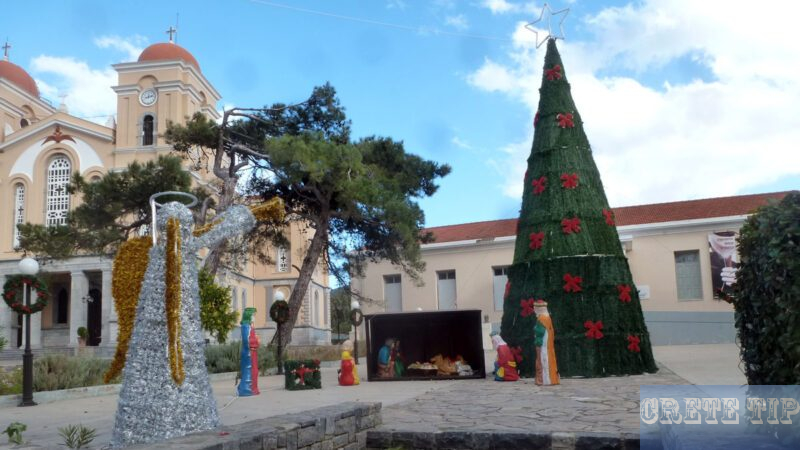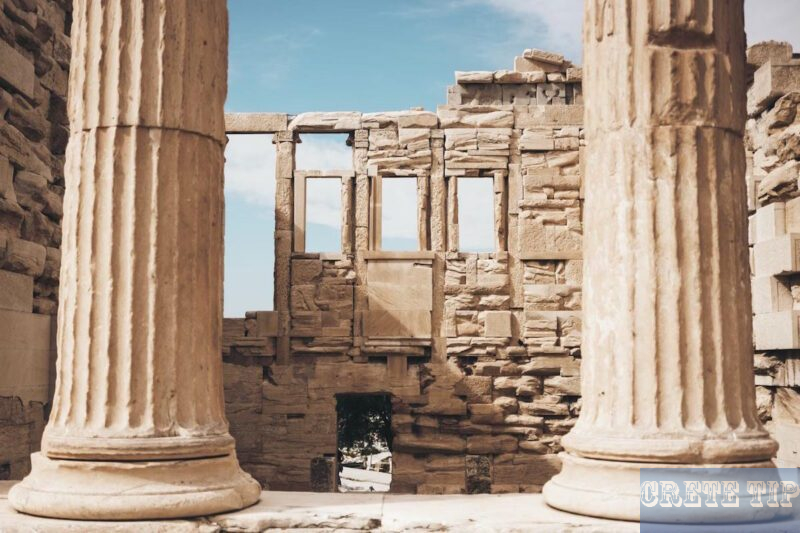Greek Christmas in the most remote corners: a strange time.
Christmas in the remotest corners of Greece is a strange time
In the northernmost inhabited area of Greece, the village of Ormenio Evros experiences a unique atmosphere during the Christmas season. Local community leader Stratos Vasileiadis highlights that the population comprises around 150 women, 120 men, and only 30 children, with a significant number of residents being over the age of 60. Discussions within the community often revolve around challenges such as declining birth rates, contributing to a festive mood that differs greatly from urban centres, where bustling shops and celebrations are prevalent.
The village hosts various activities aimed at spreading joy, especially for the children. Local clubs, including one led by a football team, have revitalised traditions like the Christmas tree lighting in the village square. Thanks to sponsorships, gifts were provided for every child, creating a lively festive gathering. Yet, the residents acknowledge a sense of isolation, as their celebrations largely depend on their own efforts, highlighting broader issues faced by remote communities in Greece.
‘Strange time’ at Christmas on the remote island of Gavdos off Crete
Christmas time in Gavdos presents a unique atmosphere for its residents. Efforts have been made to decorate the island, with white, warm lights adorning many buildings, boats, homes, doors, windows, and both real and artificial trees. The mayor, Lilian Stefanaki, mentions that the community strives to bring a festive spirit to those who are isolated and alone, highlighting the need for support from the municipality.
Among the roughly 60 permanent residents, some are baking traditional festive treats such as kourabiedes and melomakarona, keeping alive certain customs and traditions. Yet, the reality for many households is that they consist of just one person. The mayor reflects on the oddity of the season: during the summer months, the island can host up to 3,000 visitors, but now, those present gather in the few open cafes.
The island’s four children, two of whom attend primary school and two others in secondary education, will go door-to-door singing carols with their teacher, a cherished annual tradition. This year, however, brings additional challenges. The local priest is currently ill, raising concerns about whether a replacement from Crete can be found for the Christmas service.
Moreover, the mayor points out a more pressing issue: the continuous arrivals of migrants. Despite the challenges of living in isolation, the celebratory mood is hard to maintain with such stark circumstances. In recent days, reports emerged of migrant bodies being recovered from the sea, casting a shadow over the festive season. The mayor adds that every corner of Greece requires its specific attention and care.
She asserts the necessity for targeted strategies to ensure the island and its inhabitants remain viable. Efforts to keep this southernmost point of the country alive are ongoing amidst these struggles. The community is determined to uphold its traditions and foster a sense of togetherness, even in these peculiar times.
While the lights and decorations bring some cheer, the reality of life on Gavdos during Christmas highlights a blend of resilience and sorrow. The contrast between the festive spirit people strive to create and the challenges they face reflects the complex nature of life in an isolated place.
As the community attempts to celebrate, the stories of loss and endurance resonate deeply. The mayor’s commitment to supporting her residents and maintaining a connection to their traditions underlines the importance of community in overcoming adversity. The lights, while illuminating the buildings, also serve as a reminder of the need for unity and care among the island’s inhabitants.
Nestled in the Mediterranean, Gavdos may face a perilous reality, but the heart of its residents shines through. Each year, the festivities are not just about decorations or the food; they represent strength in the face of isolation. Amidst the ongoing issues of migration and community challenges, the spirit of Gavdos continues to endure, showcasing the island’s tenacity and warmth.
Local gatherings, even in small numbers, exhibit a desire to remain connected to one another. In these moments, the essence of Christmas comes alive—marked by kindness, shared stories, and communal support. In all its oddities and challenges, Christmas in Gavdos reveals layers of meaning that go beyond mere celebrations. It illustrates the richness of human connection, the importance of remembering those who struggle, and the resolve to keep traditions alive even when faced with adversity.
As the island’s inhabitants light their candles and share their meals, they carve out their own version of the festive season. It is a time to reflect on the fragility of life, the strength of community bonds, and the hope that persists even in the most isolating circumstances. Every light twinkling against the dark backdrop of winter carries the weight of their shared experiences and aspirations.
This delicate balance highlights the ongoing transformation of Gavdos, where nature and human existence intertwine. The visible efforts to maintain traditions indicate a deep-rooted connection to their heritage, even when external forces challenge their way of life. The sense of community forged through these traditions becomes crucial for the residents as they navigate their unique Christmas experience.
Households with One Individual
In light of these factors, the holidays take on a different meaning for those living on Gavdos. Efforts to retain a sense of community and continuity are vital, especially for individuals who may feel particularly cut off from festive activities. Local traditions are important, and they provide connections among the small number of residents who remain during this time. These connections can help individuals feel less isolated, which is crucial during the holidays, a traditionally family-oriented time.
As part of the festivities, children playing a role in carol singing helps reinforce these social bonds. Their actions bring a moment of joy and light to the residents’ lives, creating a buffer against the prevailing concerns of isolation and uncertainty. The warmth of shared traditions can counteract feelings of loneliness, providing a festive atmosphere that might otherwise be lacking.
The efforts of community members to decorate their homes and participate in or organise activities reflect their determination to preserve a festive spirit. Despite the difficulties faced, such as concerns over migration, illness, and the challenges of maintaining a lively community, these individuals work together to create a joyful environment. The presence of festive lights serves as a reminder that Christmas is also about hope and resilience, even in the toughest of circumstances.
Moreover, the concept of gift-giving remains an essential part of the Christmas celebration. Gifts for children not only foster joy among the younger generations but also represent a wider spirit of generosity within a community that seeks to look after its more vulnerable members. Gifts strengthen community ties, a crucial aspect in small households where individuals may feel alone during the holiday season.
For many living in single-person households, the holiday season can be bittersweet. They may reflect on their situation and what the festivities mean for their lives. Yet, even in isolation, they find ways to connect through shared activities and cultural practices that underline the importance of community, regardless of its size. Engaging in local traditions like carolling can serve as a reminder that they are not entirely alone, and that their contributions to the festive season matter.
What’s more, the resilience shown by these individuals is noteworthy. They continue to celebrate their identity and heritage, despite the numerous challenges posed by their environment. This determination helps preserve local customs, ensuring that even within a seemingly bleak situation, there remains a glimmer of festivity.
In essence, the holiday period does not transform the reality of living in a small, often isolated community. Instead, it highlights the critical role that gatherings, traditions, and shared experiences play in enhancing the lives of those present. The commitment to maintaining local customs underscores a broader human desire for connection and belonging that transcends physical proximity.
As communities across the country grapple with the complexities of modern life, individuals in single-person households rely on these ingrained traditions. They seek solace in the familiar and find strength in remembering that they are part of a larger narrative, even if their physical interactions are limited.
Furthermore, local events during the holiday season reflect the evolving nature of celebrations and the need to adapt to current circumstances. Each year brings new challenges, yet the ability of communities to come together remains essential. Shared initiatives and activities serve as reminders that festive traditions are not solely for families but are also vital for those living alone.
Frequently Asked Questions

What aspects create a joyful ambiance in cities during the festive season?
Various elements contribute to a joyful atmosphere in urban areas throughout the holiday season. These can include vibrant decorations, community activities, and seasonal markets. A combination of lights, music, and joyous gatherings can elevate the festive spirit among residents and visitors.
How do cultural practices influence the holiday spirit in urban environments?
Cultural traditions play a significant role in shaping the festive mood in cities. Each community may celebrate the holidays in unique ways, incorporating local customs, foods, and rituals. These traditions help connect individuals to their heritage and create a sense of belonging, enhancing the overall festive experience.
In what ways do decorations contribute to the festive mood in cities?
Decorations greatly enhance the holiday spirit in metropolitan areas. Streets adorned with lights, Christmas trees, and festive displays can mesmerise passersby. They serve not only as visual delights but also as reminders of the joy and warmth of the holiday season.
Can climatic conditions influence the festive atmosphere in urban settings?
Weather can significantly impact the festive ambiance in cities. For example, snowy conditions may evoke traditional holiday images and strengthen the festive feeling, while milder weather may encourage outdoor celebrations. Extreme weather can also affect participation in events and activities.
How do public events and festivities nurture a holiday atmosphere in towns and cities?
Community events, such as parades, concerts, and festivals, bring people together, fostering a sense of unity and joy. These gatherings provide opportunities for individuals to share experiences and create lasting memories, further enhancing the holiday spirit in urban areas.
What importance does local food have in shaping a festive environment in cities?
Local cuisine plays a vital role in fostering a festive atmosphere. Traditional dishes and seasonal treats can evoke feelings of nostalgia and warmth. Food festivals and seasonal markets allow people to indulge in favourite holiday flavours, strengthening community ties and amplifying the festive cheer.






